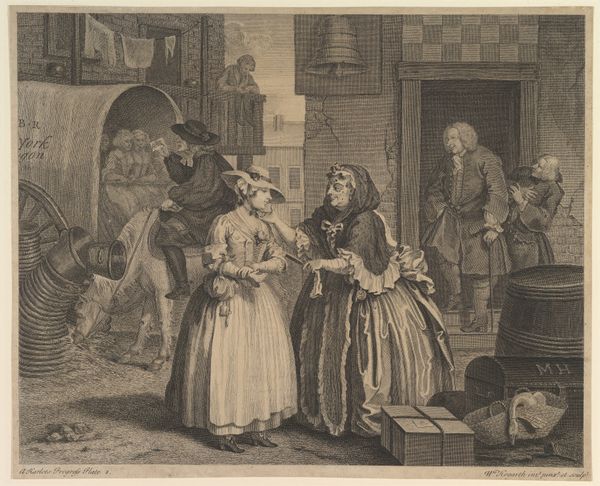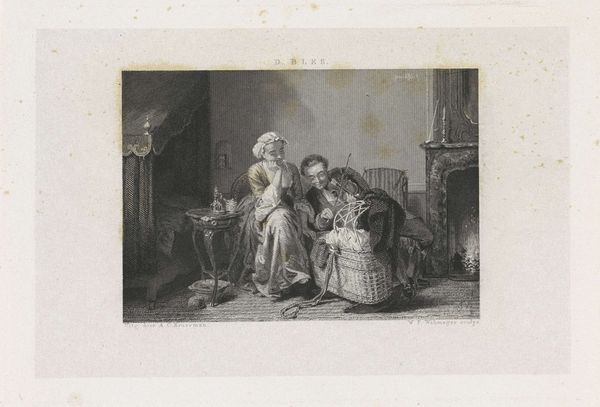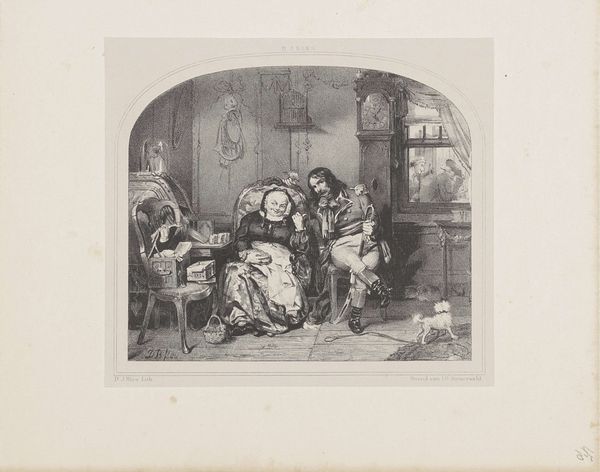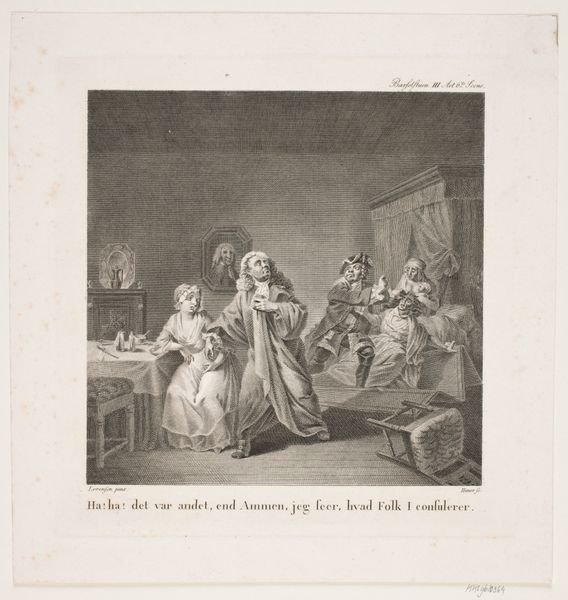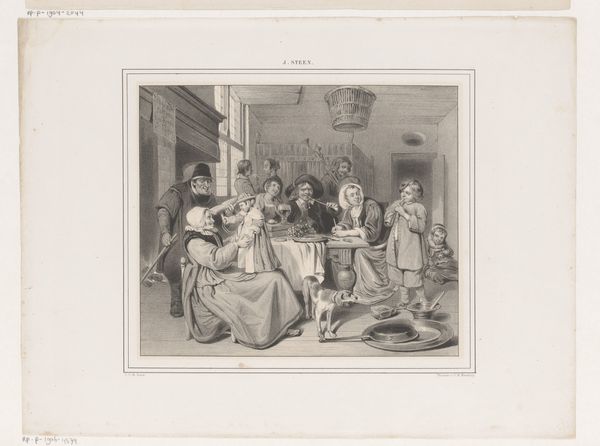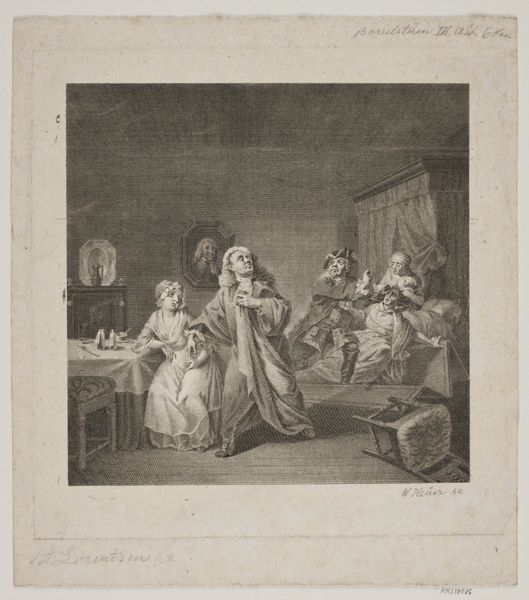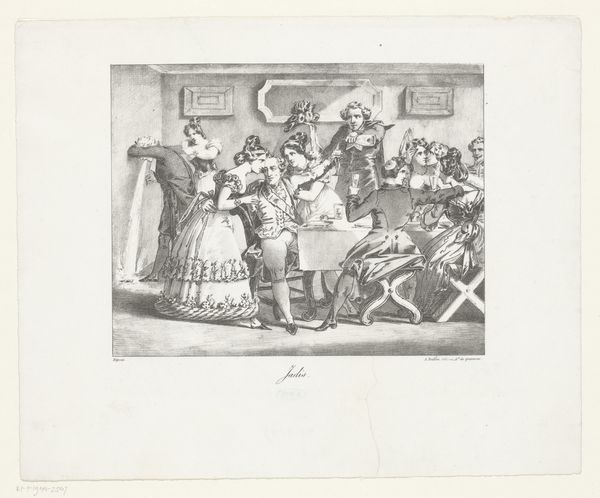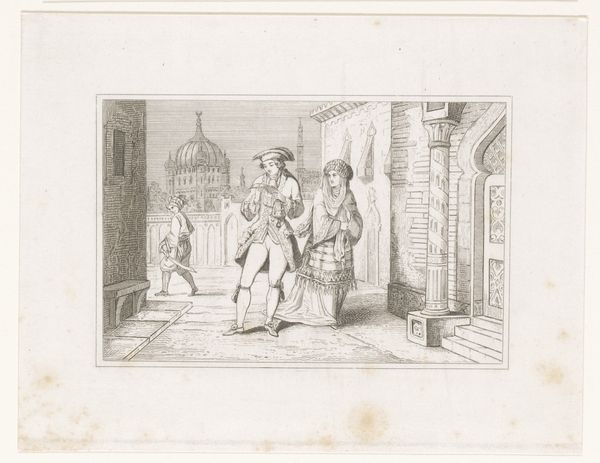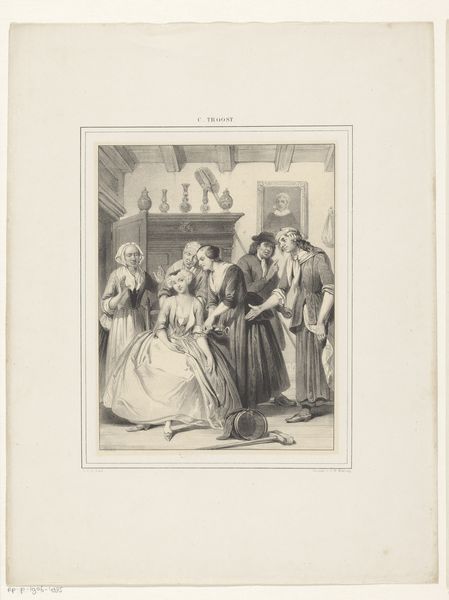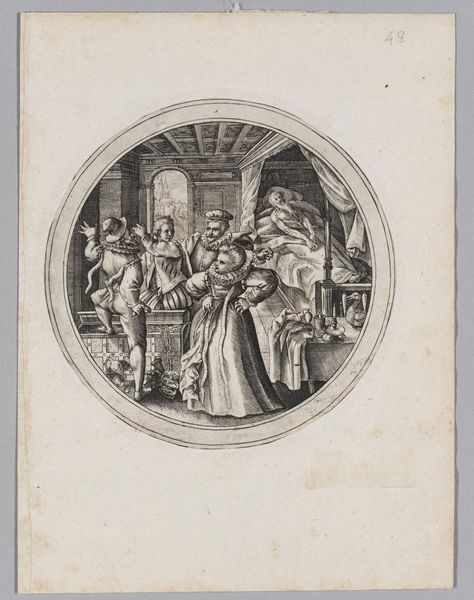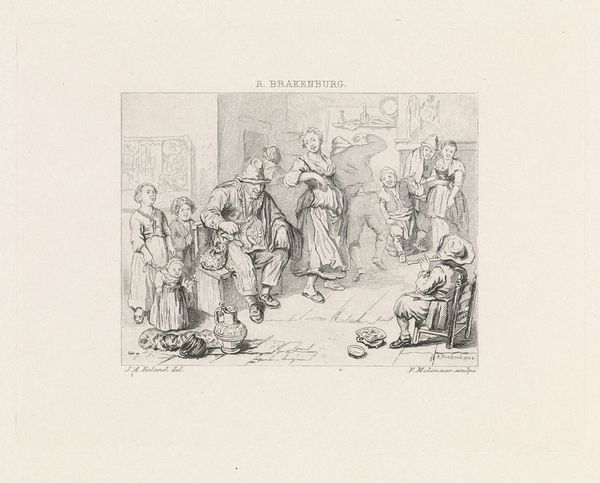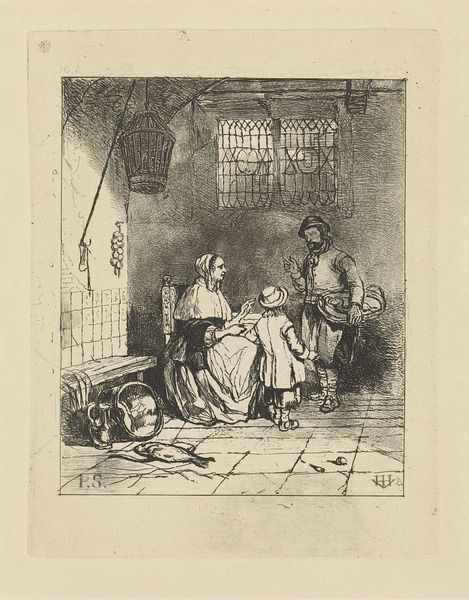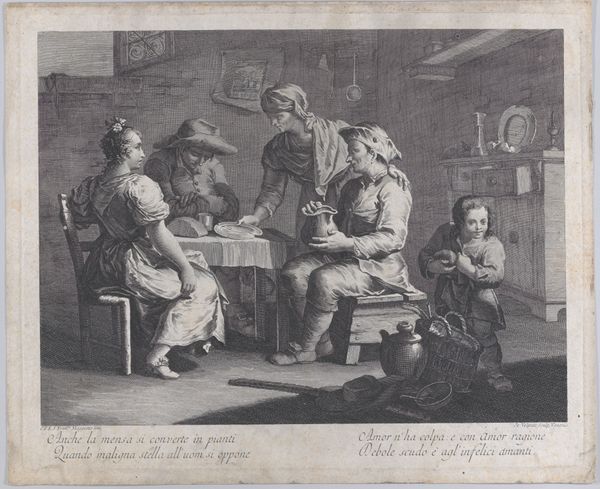
print, etching, engraving
#
narrative-art
#
baroque
# print
#
etching
#
old engraving style
#
cityscape
#
genre-painting
#
history-painting
#
dress
#
engraving
Dimensions: height 211 mm, width 273 mm
Copyright: Rijks Museum: Open Domain
This print, "The Harlot’s Progress Plate 1," was made by William Hogarth, and it's made using the process of etching, a technique that allowed for the relatively easy production of multiple images. Hogarth would have used a metal plate, covering it with a waxy, acid-resistant substance, before drawing the design. Acid would then bite into the exposed lines, creating grooves that hold ink. The image is transferred to paper under high pressure. This method allowed Hogarth to produce images for a wider audience than traditional painting ever could. Hogarth’s choice of printmaking, rather than painting, is critical here. This wasn't art for the elite; it was for the rising middle class. The narrative unfolding in the image speaks directly to their moral concerns and social anxieties. "The Harlot's Progress" is a product of its time, reflecting the changing dynamics of labor, class, and consumption in 18th-century London. Ultimately, Hogarth was able to create an entire industry around his images. This entrepreneurial spirit speaks to the changing landscape of art production, blurring the lines between fine art and commercial enterprise.
Comments
No comments
Be the first to comment and join the conversation on the ultimate creative platform.
